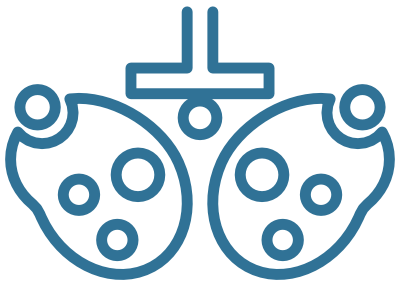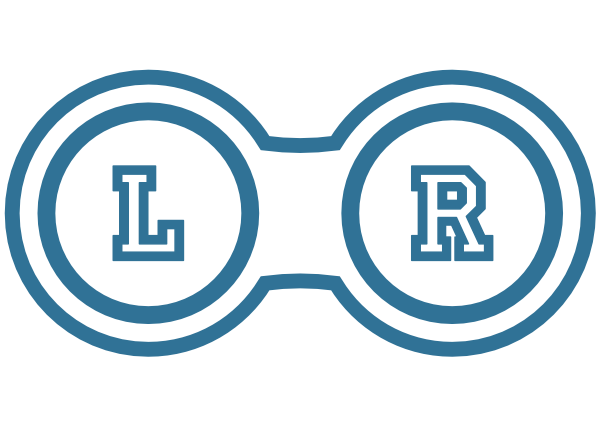Many people in the Fort Collins, Loveland and Greeley area find that contact lenses provide greater convenience and a more satisfying vision correction than eyeglasses are able to provide. Let’s take a look at what is involved in a normal contact lens exam and fitting:
First: a comprehensive eye exam
Before you are able to be fitted with contact lenses, a comprehensive eye exam is needed. During the course of this exam, Dr. Wiarda will determine your prescription for corrective lenses (a prescription for glasses) and checks are made for any eye health problems or other issues that may interfere negatively with successful contact lens insertion and wear.
If everything looks good during your eye exam, then we go to the next portion of the process – a contact lens consultation and fitting.
Second: a contact lens fitting
During a contact lens fitting Dr. Wiarda will take into consideration the activities of your daily life and any preferences you may have regarding contact lenses, such as if you will want to change your eye color with color contact lenses or weather you are interested in other options like daily disposables or overnight wear. Although many people in Fort Collins, Loveland and Greeley choose soft contact lenses, the “pros and cons” and of rigid gas permeable (GP) lenses will likely be covered in addition to everything else discussed.
Dr. Wiarda will also talk with you about bifocals if you are over the age of 40 and need bifocals. There are a couple of options available for this need, including multifocal contact lenses and monovision (a prescribing technique where one contact lens corrects your distance vision and the other lens corrects your near vision).
Third: measurements for contact lens
Taking proper measurements of your eyes is an extremely important step in this whole process. Discomfort or even damage to your eye can occur if the curvature of a contact lens is too flat or too steep for your eye’s shape. Measurements that will be taken include:
- Corneal curvature: To measure the curvature of your eye’s clear front surface- your cornea- we use something called a ‘Keratometer. With this we are able to select the optimal curvature and diameter for your contact lenses. Sometimes, because of astigmatism, the surface of your eye can be somewhat irregular and may require special lens types known as toric contact lenses. In the past, the only lenses that could be used for correcting astigmatism were gas permeable contact lenses; however, there are currently several types and brands of soft toric lenses available on the market today. These new soft toric contact lenses are available in colored, multifocal, extended wear, and disposable versions.
For some people in Northern Colorado, we will do a measured map of the outer layer of your eye (cornea). This process is called corneal topography. Corneal topography gives us very detailed information about surface measurements of the cornea thus creating for us a map of your eye; with different contours shown by varying colors just like a geographical topography map.
- Pupil and iris size: The measurement of the diameter of your eye’s pupil and iris are needed so that we can fit you with the right contact lens design. This is especially true if you want to wear GP contact lenses. The diameter can be determined with a lighted instrument called a biomicroscope which is also known as a a slit lamp or with a template card.
- Tear film evaluation: To have a successful experience wearing contact lenses, you need to have adequate tear film in order to keep the contacts lenses and your eye (cornea) hydrated enough. We may perform this test by placing a small amount of liquid dye on your eye so that we can see your tears with a slit lamp. Or we may place a small strip of paper under your eye so that we can see if your tears moisten the paper or not. For some people in Northern Colorado who have a condition known as dry eyes contact lenses may not be the best choice. We can also help you determine which contact lens material will be the best choice for you by the measurement of tears that your eyes produce in this test.
Trial lenses
For many people in Fort Collins, Loveland and Greeley, trial lenses will be put into temporary use to aid in your contact lens decisions. These trial lenses will be placed on your eye and your doctor will use the slit lamp to discern the position and movement of the lenses as you blink and look in different directions. Your eye doctor will also ask you how the lenses feel when they are in.
Normally, you will need to wear the trial lenses for about 15 minutes so that any initial excess tearing of the eye stops and your tear film stabilizes. If everything looks acceptable, instructions will be given to you regarding how to care for your lenses and how long you should wear them.
Training will also be given on how to apply, remove and handle the lenses.
Follow-up visits confirm the fit and safety
Your contact lens fitting will involve a number of follow-up visits so Dr. Wiarda can confirm the lenses are fitting your eyes properly and that your eyes are able to tolerate contact lens wear. A dye (like the one used to evaluate your tear film) may be used to see if the lenses are causing damage to your cornea or making your eyes become too dry.
Often, Dr. Wiarda will be able to see warning signs before you are aware a problem with your contact lens wear is developing. If such warning signs are evident in your follow-up visits, a number of things may be recommended, including trying a different lens or lens material, using a different lens care method, or adjusting your contact lens wearing time. In occasional cases, it may be necessary to discontinue contact lens wear altogether.
Your contact lens prescription
After finding a lens that provides comfort, proper fit as well as good vision for you, Dr. Wiarda will write a contact lens prescription specifically for you. This prescription will include the contact lens power, the curvature of the lens (called the base curve), the lens diameter, and the lens name and manufacturer. In the case of GP contact lenses, additional specifications may also be included.
Routine contact lens exams
Weather you have been wearing contact lenses for many years or they are something brand new to you, your eyes should be examined at least once a year to make sure your eyes are continuing to enjoy contact lens wear and show no signs of negative side effects from wearing and use of the lenses.
For additional information or to schedule an appointment, call 970-204-4020 or click on the link on the side of the page.






